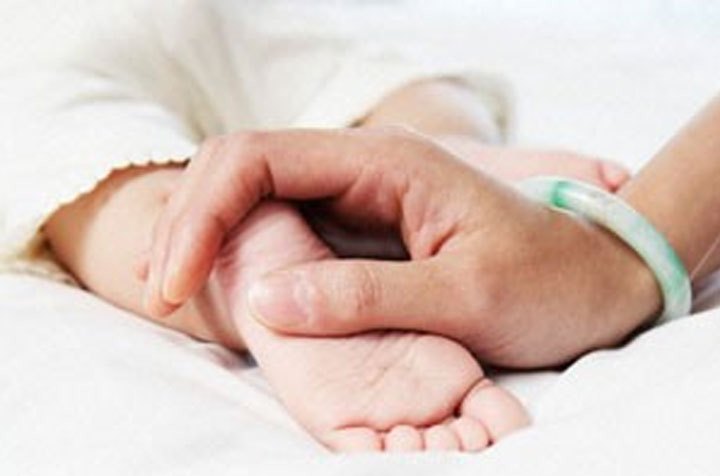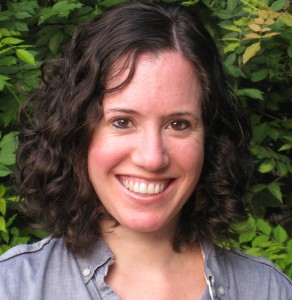Mara Buchbinder on her latest book “Saving Babies? The Consequences of Newborn Genetic Screening”

1. How did the idea for this project come about?

It was a question of being in the right place at the right time. I was brought on to the project after the initial investigators, who were two professors of sociology at UCLA, had developed this idea to study the impact of newborn screening in the clinic. They had learned that newborn screening was in this new phase of development where the state had just rolled out screening tests for a large number of disorders. They were really interested in doing something around the idea of medical uncertainty and this seemed like a perfect target for exploring some of those ideas, because it was really unclear what the impact of screening asymptomatic children for such a large number of disorders was going to be. At the time that this was getting off the ground, I was a graduate student. I was working on my dissertation research and I started out working on the newborn screening project as a research assistant. Over time, one of the investigators got busy with other projects, and I ended up taking on a bigger role, and working more closely with Stefan Timmermans, who co-authored the book with me.
2. What inspired you?
It was the people, in large part. I admired my collaborators and I thought that I had a lot to learn from them. And then, I have always had an interest in pediatric medical settings, and especially in communication between clinicians and parents around children’s chronic health conditions. Most of my work had been with children and older adolescents, but I thought that this was an interesting opportunity to focus more on the parents, because the kids were going to be babies so I was not going to be interviewing them or engaging them as much.
3. What were some of the practical and intellectual challenges you faced in the research and writing?
We were interested in looking at the consequences—for families, geneticists, and society at large—of rapidly introducing new screening technologies. We did this mostly by doing participant observation over the course of three years in a metabolic genetics clinic that treated children who had received positive newborn screening results. So we went to the clinic every week and every time a newborn screening patient would come in, we would approach the family to be in the study. We audio-recorded and sat in on the discussions between the parents and the geneticists. Then we followed these cases over time and looked at what happened in terms of the children’s diagnostic trajectories.
One of the practical challenges was that we had originally planned on videotaping these interactions. We found pretty early on that there was resistance to videotaping. This was a method that is used quite a bit in primary care medical settings, but I think we were not really prepared for the sensitivity with which you need to approach encounters with parents of new babies who have been told that their child might have a potentially life-threatening disorder. Those were the circumstances under which they were coming to the clinic. So they were coming with a lot of anxiety and trepidation, and a lot of uncertainty about their children’s futures. I think that having their consultations videotaped was a little bit more than they were willing to do. We had a couple of people who said no to the videotaping, but once we decided to switch to audio-tape we had very few refusals. That was the main practical challenge that stands out in my mind.
Now, in terms of intellectual challenges, one thing that I find very difficult with writing a book is being theoretically innovative, but also being clear and writing in language that is accessible to an educated public. When you are writing a book, you want it to reach more broadly than just to a specialized academic audience. I think that it can be difficult to write something that is intellectually sophisticated, that engages with some of the scholarly debates in your area, but is also clear, digestible, and interesting to read. That is probably the main challenge that stuck with me throughout the writing process. You have to strike that happy medium.
4. What was the most fun part of the research?
For me, the most exciting part about the project was the fieldwork—getting to meet new people and getting to engage with such a diverse cross-section of people. We had such diversity in terms of the kinds of families affected by newborn screening. We open the book talking about Scott Baio, the TV actor, and his wife Renee. They had this experience with their daughter receiving a false positive that catalyzed them to develop a foundation aimed at advocacy around newborn screening. So they were on one end of the spectrum. Then, we had a lot of migrant farm-working families that traveled several hours to get to this clinic because it was the closest to their particular area. So very poor families on the other side of the spectrum. And we had everything in between. It was always really exciting for me to travel and do these interviews and get to hear their stories. I heard what it was like for families when the baby was born and what happened when they found out the news about the newborn screening. So I just got lots of really personal stories, which is one of the major draws of being an anthropologist.
5. What questions does the book answer?
One of the questions that we are grappling with is: Does newborn screening save lives? We play with that a little bit in our title. We are very modest about the way we answer this question because this was not an epidemiological study. So we cannot compare two different populations, one that was screened and one that was not, and then show the differences in health outcomes. We take the question on in a very nuanced anthropological sense and we unpack what it actually means to screen babies for life-threatening conditions, what are the limits of screening, and what conditions have to be in place to actually save lives following screening. We explore how that played out for different kinds of families in our study. So we show that even though there is a really strong advocacy narrative that suggests that newborn screening is inexpensive and saves babies’ lives, things are a lot more complicated than that. Some babies probably never would have been in jeopardy if they had not been screened because they would have been asymptomatic. In those cases, it is not always clear that we are screening them for disorders that are really diseases, and it might be that some of the screening targets represent more benign forms of variation. Some babies are identified through screening but then they do not actually get the treatment that they need because there are barriers to accessing treatment after receiving a diagnosis. The whole notion that screening saves lives can start to look a lot murkier once you consider some of these factors.
6. What new questions does it raise?
A big question is what can this tell us about medicine more broadly, what can this story tell us about screening programs of the future? When you are writing about a cutting-edge medical technology as we were, some of the information will be outdated or updated by the time the book comes out. We started doing this research 5 years ago, so the picture has changed a little bit. With some of the things that seemed very uncertain at the beginning of our research, there is no longer the same ambiguity there. However, I think a lot of the lessons about the limits of screening and the consequences of introducing new medical technologies into clinical practice still remain.
7. What advice do you have for medical anthropologists doing research and wanting to get published?
I think the most important thing is to choose a project that really captivates your attention. Since I have come here to UNC it has taken me a little bit longer to figure out what my next project will be. Sometimes you are just in the right place at the right time and you fall into something that is the perfect fit, and other times it has to be more intentional and you have to actually go out and search for it. I think that finding that fit where you are really satisfying your intellectual curiosity with a particular project and a particular set of questions is so important, especially as an anthropologist because you are going to be writing about that for a very long time.
8. If you could do something different about the process, what would it be?
I suppose if we had had more time and more resources, it might have been nice to do a comparative study and work in more than one clinic. As a qualitative anthropologist, I sometimes wonder about the extent to which my ethnographic findings are generalizable to larger populations. On the flipside, one thing that was really nice about our approach was that we were able to have this long-term, sustained engagement in a particular setting and with a particular set of actors so that we were able to see things change over three years. That was really valuable. If we had done one year of fieldwork in three different clinics, we would not have that same perspective or that temporal dimension to our study, which was so valuable. There are tradeoffs everywhere.
9. What is next for you?
The thing that I took away from this project was an interest in how state-level policies affect the doctor –patient relationship at the micro-level. I am now working on a study looking at treatment for back pain in the emergency room and how changes in state policies about opioid prescriptions can affect the doctor-patient relationship. In my future work, I’m really interested in exploring how a variety of changes in US health policy are experienced by people in the everyday world of the clinic.
Learn more about Saving Babies? The Consequences of Newborn Genetic Screening »
